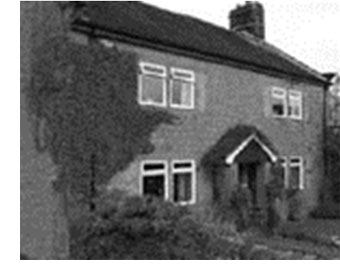 Very little is known about the Wilsons Arms. In the 18th century to 1830, it was known as the Plough Inn, owned by Susannah Holmes, who sold it to Edward Forster in 1834, who is described in a rate book for 1836 as “owner and occupier of the Wilson’s Arms, assessed at £3. 10s. 0d, the annual value £70.” By 1841 it was known as the Wilson’s Arms when Edward Forster was the licensee, followed by Joseph Davey in 1851 who was an Innkeeper and farmer of 42 acres. In the 1861 census it was no longer an inn and had been re-named East Chevin Farm and occupied by William Lawson who was just described as a farmer of 42 acres.
Very little is known about the Wilsons Arms. In the 18th century to 1830, it was known as the Plough Inn, owned by Susannah Holmes, who sold it to Edward Forster in 1834, who is described in a rate book for 1836 as “owner and occupier of the Wilson’s Arms, assessed at £3. 10s. 0d, the annual value £70.” By 1841 it was known as the Wilson’s Arms when Edward Forster was the licensee, followed by Joseph Davey in 1851 who was an Innkeeper and farmer of 42 acres. In the 1861 census it was no longer an inn and had been re-named East Chevin Farm and occupied by William Lawson who was just described as a farmer of 42 acres.
It is thought that the closure in 1852 was due to the loss of trade occasioned by the new Leeds to Otley Road via Pool Bank being opened.
The former inn stood on the roadside a few hundred yards from the entrance to Yorkgate, and reached its heyday at a time when the stage coaches and local carriers were using that road between Leeds, Otley and Ilkley, via Headingley and Cookridge.
It still remains known as East Chevin Farm.
NB. Following further research it is possible that “The Wilsons Arms” and “Plough Inn” were two separate Inns.

I, with now ex-husband purchased East Chevin Farm in 1966 and moved in when married in 1967. We purchased the house and outbuildings plus half of the land on offer approx. 14 acres the balance being sold to someone else. We continued to farm there and had poultry and pigs. The outbuildings were three sides facing the yard and the road. In the centre there was a barn which had been the coach house in the past to the left of this was a 2 storey building.. We kept pigs in ground floor area. there was a door at the back and in the yard. Upstairs, up stone steps, had, I think been for horse equipment and maybe accommodation for coach driver\groom etc. The steps also went to second floor of barn which only came half way across barn. On right hand side of yard a modern mistal or cow house with stalls had been built. There was no garden! The field came right up to the house. But I cultivated it and enjoyed in the summer. The house had a stone cellar with a window and stone slab benches to keep food. We used it to keep Christmas poultry cold after it had been prepared to sell! I did have electricity and “real” fires and I built the main fireplace!! The floors downstairs were Yorkshire stone but this caused condensation on the stone so a synthetic flooring was laid -possibly bitumen.
Hi Susan
Thanks very much for your message. How interesting! We’re always more than happy to receive these recollections – fantastic. May I use your post on our history page? If you can tell us any more history, that would be great. I’m sure we and others would find it fascinating.
Cheers
Eddie
Otley Pub Club